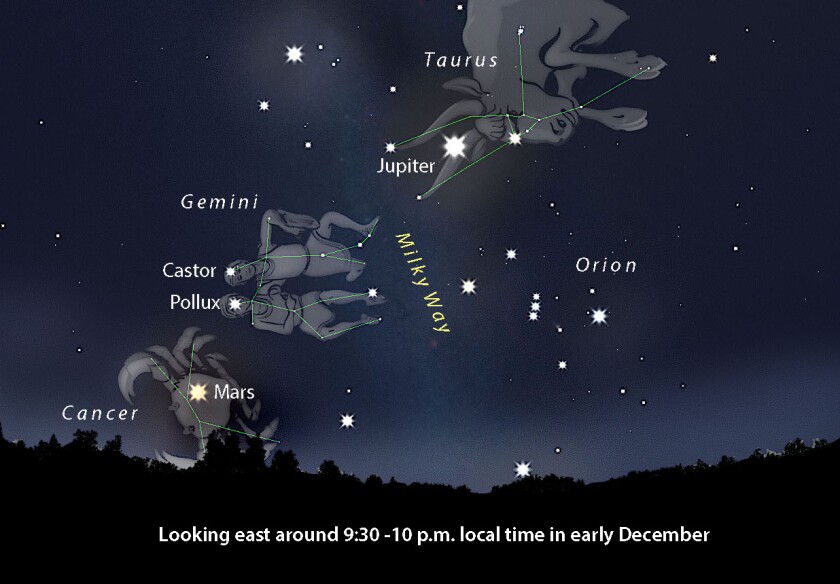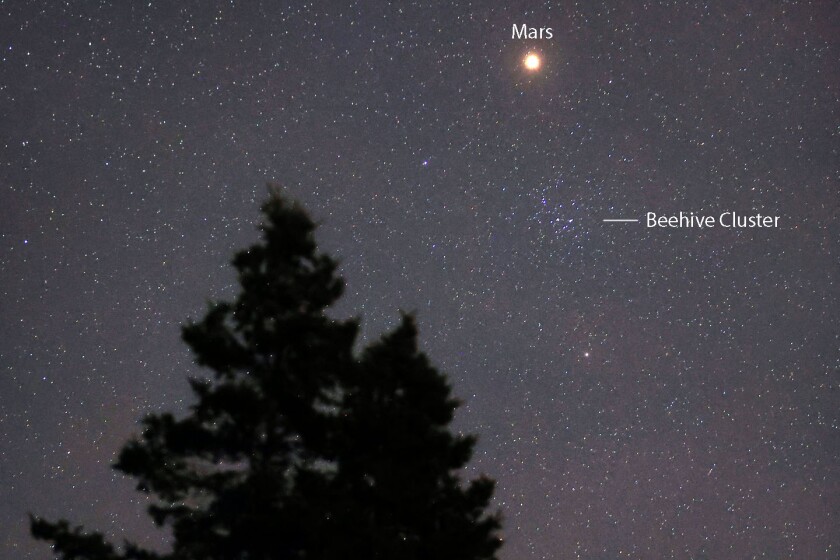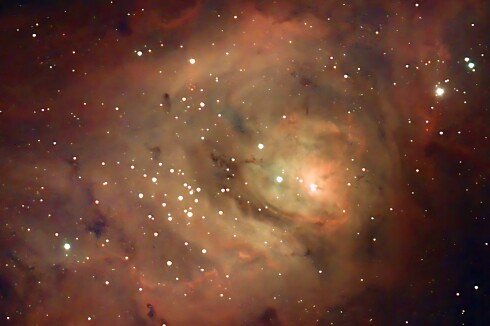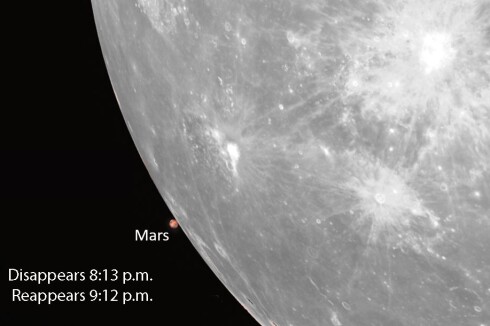The Pleiades cluster gets a lot of attention and rightly so. Also called the Seven Sisters, they're bright, tightly bunched and obvious without optical aid in the fall and winter sky. But it's only one of more than 1,100 known open clusters in the Milky Way Galaxy. While that may sound like a lot, astronomers estimate there 10 times that number waiting to be discovered.
They're called "open" because they're loose groups of stars that typically hang together for "only" a few hundred million years, a drop in the bucket compared to the more tightly bound, star-rich globular clusters with lives of 10 billion years and longer.
ADVERTISEMENT
The Pleiades is one of the brightest star clusters. Ditto for the neighboring Hyades cluster, both of which reside in Taurus. Two constellations to the east along the zodiac bring us to Cancer the Crab, home this month to Mars. Fiery red-orange in color you can't mistake it for any other planet.

A couple nights ago during a rare clear spell, I watched Mars climb the gap between spruce trees and noticed a familiar fuzzy glow just beneath it. It was the Beehive cluster, the best-known astronomical sight in that otherwise dim constellation. Weighing in at 4th magnitude (equal to a faint naked-eye star), it's visible without optical aid as a fuzzy blotch roughly the size of the full moon.
You'll see it best with averted vision, the technique of looking at something obliquely rather than directly. Given how close Mars and the Beehive were I thought they'd make a great sight in binoculars, so I slung the 8x40s around my neck and took a look.

Wow! What a contrast they made —singular and brilliant Mars shining next to a swarm of fainter stars. I didn't count all the starry sparks but it was more than a few dozen. When Galileo first looked at the Beehive in his tiny telescope he counted 40. The brightest of them, located in the cluster's core, were shaped like a little V, similar to the Hyades.
Alignments like these help beginning skywatchers find things that might otherwise be difficult to track down. Just point your binoculars at Mars and immediately below it you'll spot the cluster. So easy.
Of course, planets move. The word "planet" is ancient Greek for "wanderer." To keep track of them we have to routinely look up. In early December Mars is closest to the Beehive, separated by only 2 degrees. This happens to coincide with the time that the planet appears to stop in the sky and then reverse course. On Dec. 7, Mars will be stationary — it will stop moving eastward in the usual direction and begin moving west in retrograde motion.
In time, we'll see it slide away from the cluster and eventually out of Cancer altogether. Come mid-January Mars crosses into neighboring Gemini. What's going on here? Can a planet actually reverse course in its orbit? No, it cannot.
ADVERTISEMENT
What's happening is that the Earth, which zips around the sun faster than Mars, laps the Red Planet. As we do, it appears to slow down and then reverse direction. Once the planet is in our rearview mirror it appears to stop again and then resume its usual eastward motion. The whole process happens over several months, with the planet describing a loop in the sky. The animation will help you visualize how it works.
To picture the process, imagine yourself as a passenger in a car passing another car on the freeway. As you look out your window the slower vehicle appears to be moving backwards from your perspective. You could say it was in retrograde motion, though only a nutty amateur astronomer would call it that. Ahem.
Mars will retrograde until Feb. 25, then stop and reverse course. As it turns back east it will nudge up against the Beehive for a second time on May 4. That approach will be even closer with the Red Planet shining inside the cluster just north of its center.
Aren't planets fun?












